Materialise Mimics
AI-Enabled Segmentation
Save time and improve management over case inflow and your team’s expertise
Swiftly segment and label images for precise 3D models with AI-enabled algorithms. You’ll save time, enabling confident management of clinical case inflows without compromising quality. Our cloud-based solutions empower your teams by redirecting time from segmentation to higher-value tasks so you can ensure consistency and expedite staff training.
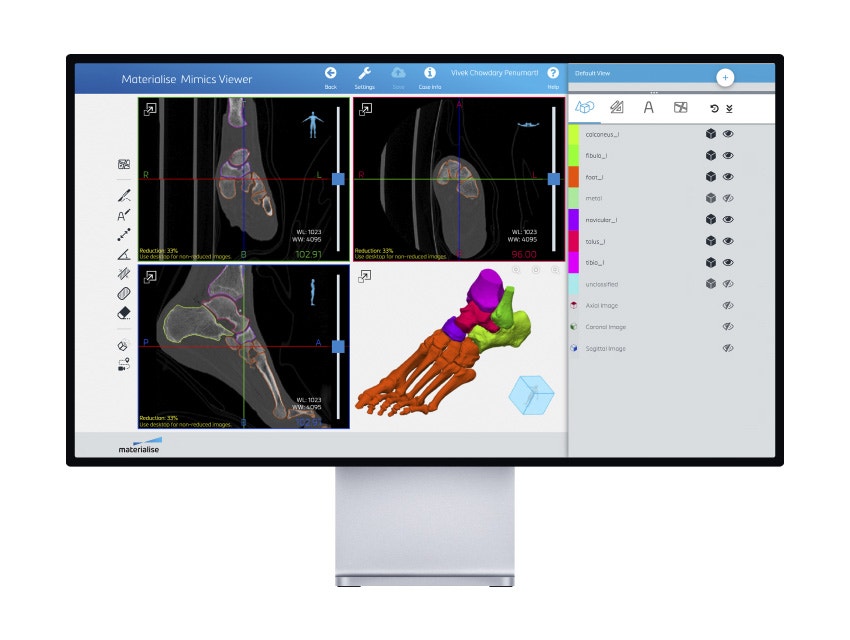
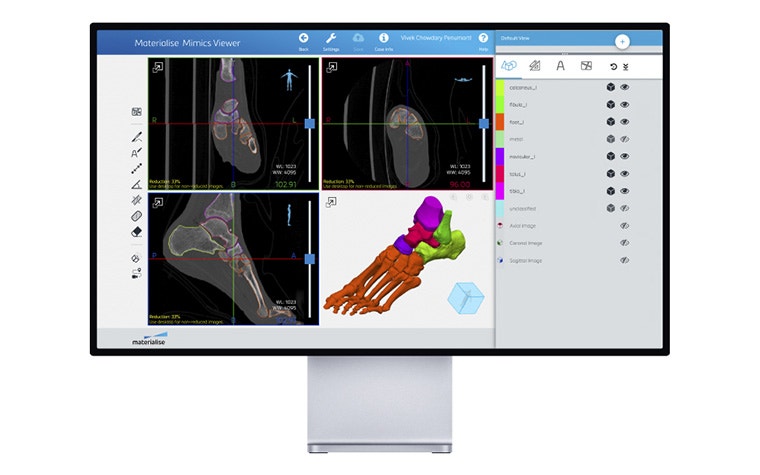
Get more out of your segmentation workflow
Save time
Increase the speed and efficiency of your segmentation activities by swiftly identifying and categorizing relevant information, thus reducing manual activities and accelerating decision-making processes.
Easily manage clinical case inflow
Deliver accurate 3D models more confidently and without sacrificing quality, especially in caseload peaks.
Optimize the use of your team’s expertise
AI allows you to spend less time on segmentation and more time on high-value tasks while improving consistency and reducing training time.
Seamlessly connect to Mimics
Our algorithms are integrated with Mimics, so automated segmentation is just a few clicks away from your workspace.
Suitable for clinical use
Use AI-enabled segmentation with confidence, knowing it's been cleared for medical use.
How it works
Select your desired segmentation type in Mimics, and the algorithm will get to work while you focus on higher-value tasks. Once it’s complete, you’ll receive an email with the results, or you can check them directly in the software.
Easily share the segmentation with your colleagues to review the case, leave annotations, perform measurements, and more — they won’t even need a Mimics license. After the segmentation, you can move on to the next step in your workflow or fine-tune the results if they don’t fully meet your needs yet.
Available algorithms
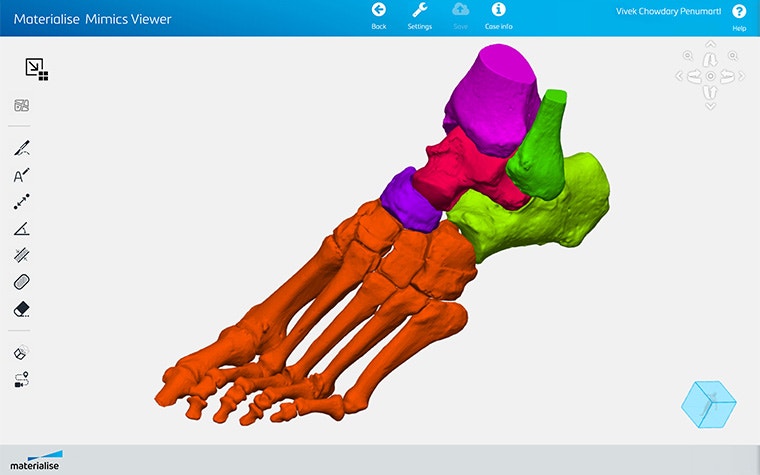
Ankle CT
Segment and label CT scans of adult patients with common forms of deviating anatomy, such as metal implants, osteoarthritis, and osteophytes.
Output
Talus, calcaneus, navicular, tibia, fibula, femur, patella, remaining foot bones, metal
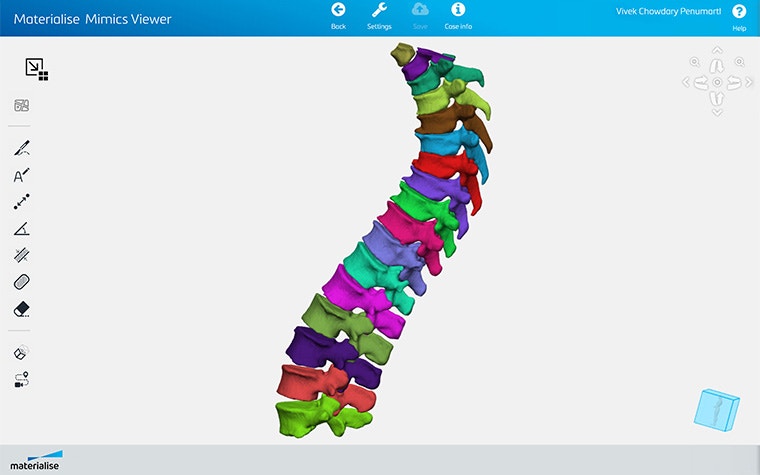
Torso CT
Output
All vertebrae with separated masks

CMF (CB)CT
CMF CBCT output
Skull and maxilla, mandible, maxillary teeth, mandibular teeth, neck
CMF CT output
Upper skull, mandible, maxillary teeth, mandibular teeth, hyoid, metal
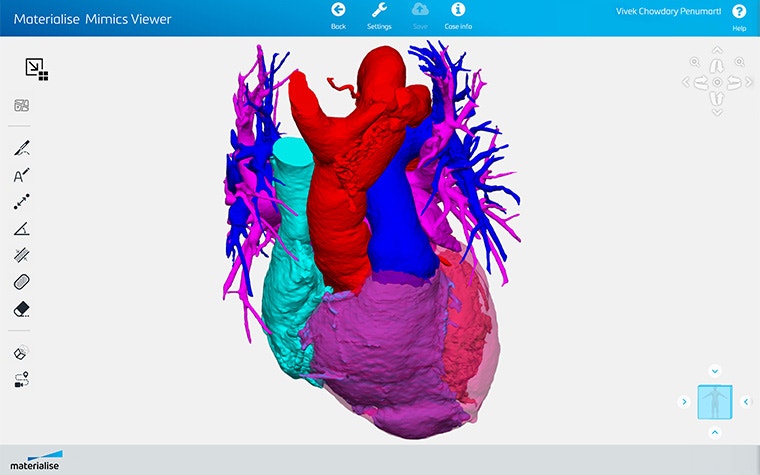
Heart CT
Output
Aorta, left atrium, left ventricle, right atrium, right ventricle, pulmonary artery, myocardium, myocardium with left and right ventricles

Shoulder CT
Output
Scapula, clavicle, humerus, metal
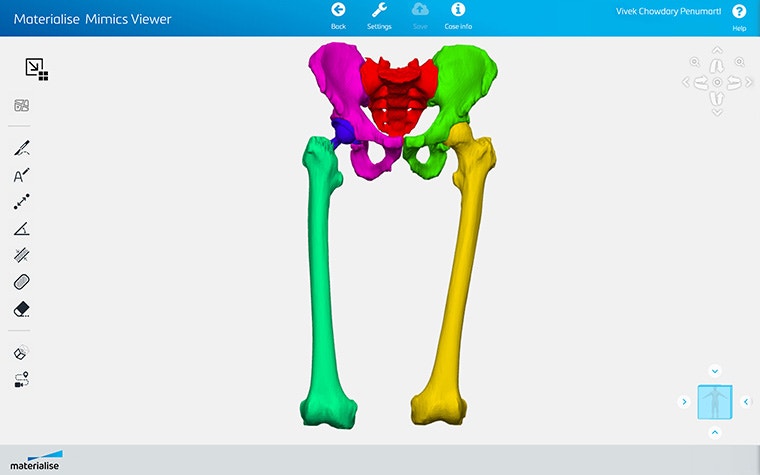
Hip CT
Output
Femur, hip, sacrum and coccyx, metal
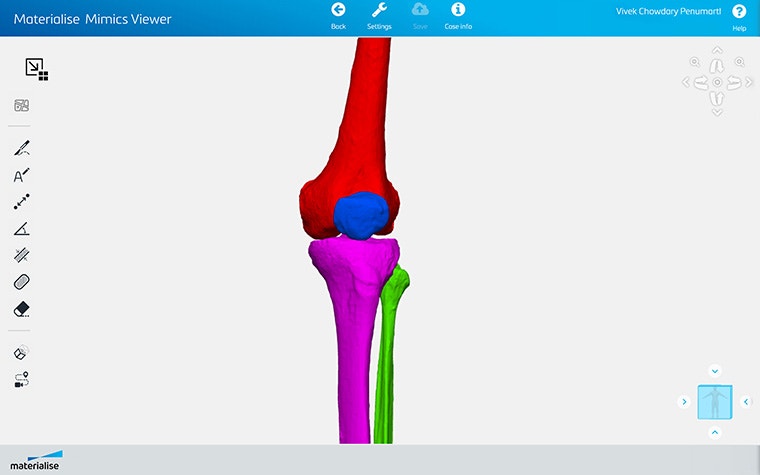
Knee CT
Output
Femur, tibia, fibula, foot bones, metal
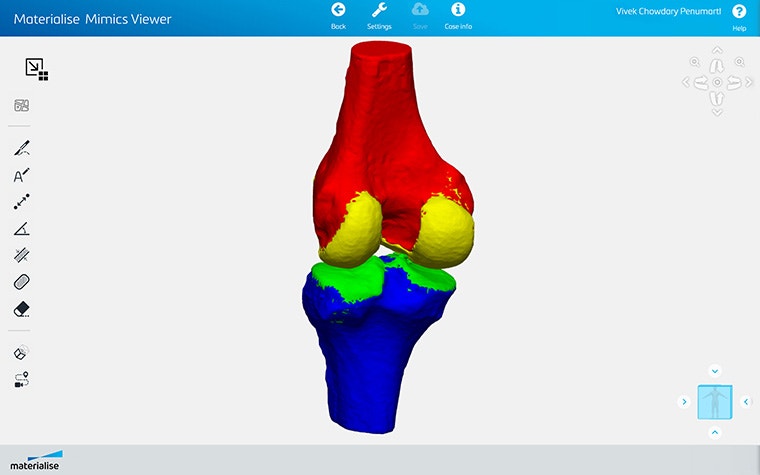
Knee MRI
Output
Femur, tibia, femur cartilage, tibia cartilage

All Bones CT
Output
21 different bone structures and metal
L-103932-01
Please note that ‘AI-enabled’ refers to numerical algorithms using artificial intelligence, including thresholding, machine learning, deep learning, graph-based and model-based segmentation algorithms, and combinations thereof that have been locked and validated before release. It does not refer to any form of adaptive AI/ML.
Materialise Mimics mentioned above is a research version only. Not all the Mimics Automatic Algorithms may be available in your area for medical use.
Materialise medical device software may not be available in all markets because product availability is subject to the regulatory and/or medical practices in individual markets. In countries where no regulatory registration is obtained of Materialise Mimics and/or Mimics Viewer a research version is available.
Please contact your Materialise representative if you have questions about the availability of Materialise medical device software in your area. For more detailed technical information, please refer to the technical documentation available in Mimics Viewer’s Help section.
Related products and services
Industry-standard software for segmentation and anatomical analysis, planning, and design
Communication tool for engineers and physicians
Manage your 3D printing and planning activities in one dedicated system to always be in the loop in real time.